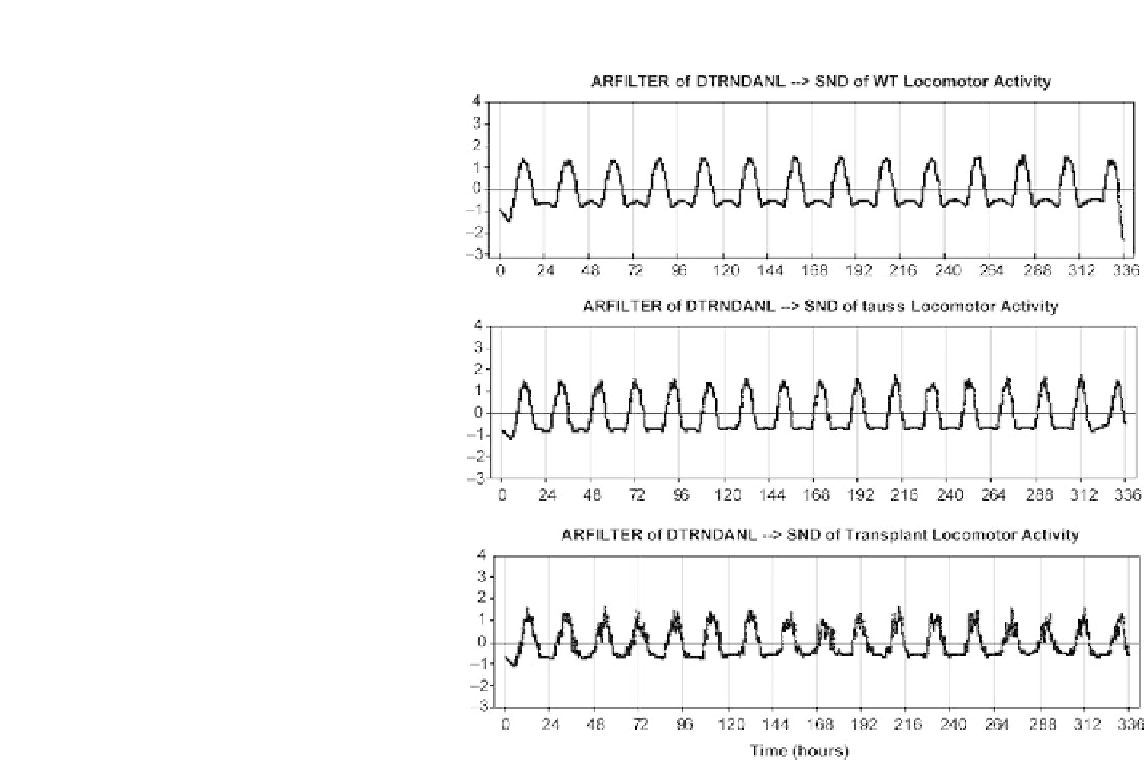Biology Reference
In-Depth Information
FIGURE 11-36.
ARFILTER output of for the detrended data (plotted in SND-space).
Figure 11-38), but the component with period 24.5 hours is also
gone. In contrast, using the ARFILTERed data shows both the
20-hour component and the 24.5-hour component (and also the
10-hour period).
Judging by the combined information that we have presented so
far, it is possible to hypothesize that the transplant hamster
exhibits rhythms that are a mix of the 24.5-hour and 20.0-hour
rhythms characteristic of the wild-type and the tau
ss
hamsters. If
this can be further corroborated, it would indicate that both the
rhythms of the tau
ss
SCN and that of the original wild-type are
evident. The extent to which these rhythms participate in the
rhythmic formation of the post-transplant data can be assessed by
the ratio of the spectral peak magnitudes of the periodic
components, measured in this case by the ratio of the respective








